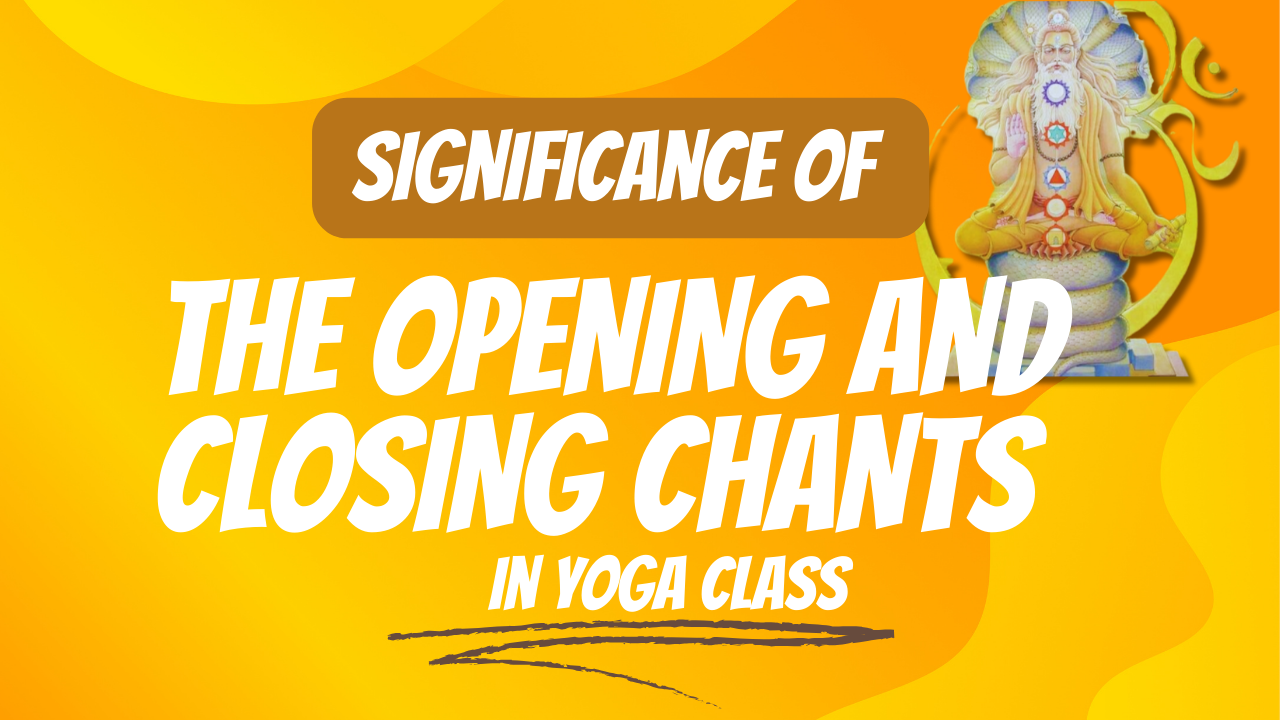Power of Ashtanga Vinyasa Yoga: Exploring the Significance of the Opening and Closing Chants
Ashtanga Vinyasa yoga is a dynamic and physically demanding practice that offers numerous benefits for both the body and the mind. While many practitioners are familiar with the challenging asanas (postures) and the importance of breath control, there is an often-overlooked aspect of Ashtanga Vinyasa yoga that plays a significant role in the practice: the opening and closing chants, also known as mantras.
These sacred chants hold deep spiritual and philosophical meanings, and they are an integral part of the Ashtanga Vinyasa tradition. In this article, we’ll delve into the significance of the opening and closing chants in Ashtanga Vinyasa yoga and explore the benefits they bring to your practice.
The Power of Sound in Yoga
Sound, or “shabda” in Sanskrit, is considered a powerful tool for transformation and healing in yoga. Chants and mantras are used to create a vibrational resonance that can positively impact your body and mind. In Ashtanga Vinyasa yoga, two specific chants are recited at the beginning and end of each practice session: the opening and closing chants.
The Opening Chant: An Invocation
The opening chant in Ashtanga Vinyasa yoga is called the “Opening Invocation” or “Opening Mantra.” It is a traditional Sanskrit chant that serves as an invocation to the sage Patanjali, who is regarded as the father of yoga. Additionally, the purpose of this chant is to honor and pay respects to Patanjali, seeking his guidance and blessings for a fruitful and safe practice.
Reciting the opening chant also helps in grounding and centering your energy. It prepares your mind to transition from the outside world into the focused and meditative state required for the practice of Ashtanga Vinyasa yoga. This chant acts as a bridge, connecting you to the lineage of yoga practitioners who have walked this path before you.
Patanjali Mantra for Ashtanga Vinyasa Yoga
The opening chant of the Ashtanga Vinyasa Yoga practice is known as the “Invocation to Patanjali” or “Patanjali Mantra.” It is traditionally recited at the beginning of an Ashtanga Vinyasa yoga session as a way to honor Patanjali, the sage who is believed to have compiled the Yoga Sutras, a foundational text in yoga philosophy. Here is the chant along with its meaning:
Sanskrit Chant:
“ॐ वन्दे गुरूणां चरणारविन्दे सन्दर्शितस्वात्मसुखावबोधे।
निःश्रेयसे जाङ्गलिकायमाने संसारहालाहलमोहशान्त्यै॥”
Transliteration:
“Om Vande gurūṇāṁ caraṇāravinde
Sandarśitasvātmasukhāvabodhe।
Niḥśreyase jāṅgalikāyamāne
Saṁsārahālāhalamohaśāntyai॥”
Meaning:
- “Om” is the universal sound and represents the essence of the ultimate reality.
- “Vande” means “I worship” or “I bow down.”
- “gurūṇāṁ” refers to the lineage of teachers.
- “caraṇāravinde” means “the lotus feet” or “the feet of the guru.”
- “Sandarśitasvātmasukhāvabodhe” can be translated as “who has awakened the happiness of the self through the grace of the guru.”
- “Niḥśreyase” means “the highest good” or “the ultimate state of well-being.”
- “jāṅgalikāyamāne” suggests “dwelling in the jungle” or “living in the wilderness,” symbolizing the challenges and distractions of worldly life.
- “Saṁsārahālāhalamohaśāntyai” signifies “for the purpose of pacifying the poison of samsara (the cycle of birth and death), delusion, and ignorance.”
In essence, this chant expresses reverence for the guru, the teacher, who guides the practitioner towards the realization of inner happiness and the ultimate state of well-being, while acknowledging the challenges and distractions of worldly life. And it is a humble beginning to a yoga practice, seeking blessings and guidance for a successful and spiritually fulfilling session.
The Closing Chant: A Sense of Closure
At the end of an Ashtanga Vinyasa yoga practice, the closing chant, known as the “Closing Invocation” or “Closing Mantra,” is recited. This chant serves as a way to express gratitude and respect to all the teachers who have passed down the wisdom of yoga through the ages. Moreover, it is a moment to acknowledge the significance of your practice and the transformation it brings.
Sanskrit Chant:
“ॐ स्वस्ति प्रजाभ्यः परिपालयन्तां न्यायेन मार्गेण महीं महीशाः।
गोब्राह्मणेभ्यः शुभमस्तु नित्यं लोकाः समस्ताः सुखिनोभवन्तु॥”
Transliteration:
“Om Svasti prajābhyaḥ paripālayantāṁ nyāyena mārgeṇa mahīm mahīśāḥ।
Gobrāhmaṇebhyaḥ śubham astu nityaṁ lokāḥ samastāḥ sukhiṇo bhavantu॥”
Meaning:
- “Om” is the universal sound and represents the essence of the ultimate reality.
- “Svasti” is an expression of auspiciousness and well-being.
- “prajābhyaḥ” refers to all beings or creatures.
- “paripālayantām” means “may they be protected.”
- “nyāyena mārgeṇa” signifies “by the path of righteousness or justice.”
- “mahīm mahīśāḥ” translates to “the earth and its rulers” or “the leaders of the land.”
- “Gobrāhmaṇebhyaḥ” includes “cows and brahmins,” representing the sacred and pure.
- “śubham astu” means “may there be well-being” or “may there be auspiciousness.”
- “nityaṁ lokāḥ samastāḥ sukhiṇo bhavantu” expresses the wish that “all beings in all worlds be happy.”
Closing Mantra offers
In summary, the Closing Mantra offers blessings for the well-being and protection of all beings, invoking the path of righteousness and justice. It expresses the desire for the happiness and auspiciousness of all creatures, including humans, animals, and divine beings. Similarly, this chant is a way to conclude the practice with a sense of gratitude and a wish for harmony and peace in the world.
The closing chant is also a way to transition out of the intense physical and mental aspects of the practice. It allows you to return to a state of balance and equanimity, leaving the yoga mat with a sense of calm and inner peace. The vibrations created by the chant resonate within you, creating a harmonious and tranquil atmosphere.
Benefits of Chanting in Ashtanga VinyasaYoga
- Focus and Concentration: Chanting the opening and closing mantras helps in sharpening your focus and concentration. It serves as a ritual that signals the beginning and end of your practice, creating a clear demarcation between your yoga session and daily life.
- Spiritual Connection: These chants connect you to the spiritual essence of yoga. So they remind you that yoga is not just a physical exercise but a holistic practice that encompasses the body, mind, and spirit.
- Respect for Tradition: By reciting these mantras, you pay homage to the ancient lineage of yogis and acknowledge the wisdom they have passed down. In addition, this sense of respect can deepen your commitment to your practice.
- Transcendence: Chanting has the power to transcend language and thought, allowing you to experience a state of pure awareness. Moreover, it can elevate your practice from a mere physical workout to a transformative spiritual journey.
In conclusion, the opening and closing chants in Ashtanga Vinyasa yoga are not mere rituals but profound practices that enhance your yoga experience. They serve as a bridge between the physical and spiritual aspects of yoga, fostering focus, respect, and a deeper connection to the tradition. So, the next time you step onto your yoga mat, remember the power of sound and allow these sacred chants to guide you on your yoga journey.


No Comments